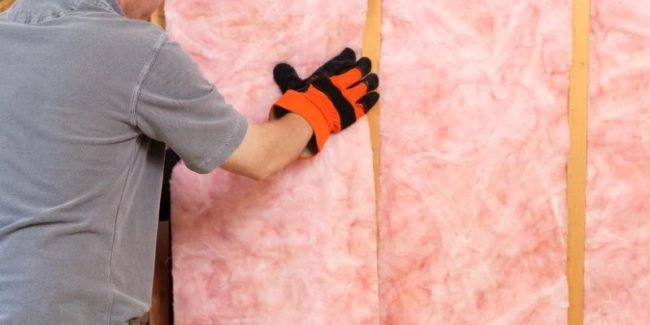Ireland’s weather can be damp, windy, and cold for much of the year, leading to high heating costs and energy loss in many homes. One of the most effective ways to tackle this problem is by installing internal wall insulation (IWI). Benefits of Internal Wall Insulation for Irish Homes. This upgrade can transform how your home feels, improve energy efficiency, and even increase property value.
In this guide, we explore the key benefits of internal wall insulation, why it’s a smart investment for Irish homeowners, and how grants can help make it affordable.
1. Improved Energy Efficiency
One of the main benefits of internal wall insulation is its ability to significantly reduce heat loss. In older Irish homes, especially those built before modern insulation standards, walls allow a large amount of heat to escape.
By adding insulation boards or insulated stud walls to the inside of external walls, your home becomes better at holding onto heat. This means:
- Less energy is wasted.
- Your heating system doesn’t need to work as hard.
- You enjoy a warmer home with more consistent indoor temperatures.
2. Lower Heating Bills
Because internal wall insulation helps your home retain heat, you will notice a drop in your energy bills. According to the Sustainable Energy Authority of Ireland (SEAI), insulation upgrades can reduce heating costs by up to 30% in some homes.
For a household spending €2,000 annually on heating, that could mean savings of €600 per year – and even more as energy prices continue to rise.
3. Greater Comfort All Year Round

Insulated walls help keep your home warm in winter and cool in summer. Unlike draughty, poorly insulated homes that feel chilly in cold weather and stuffy in warm months, a properly insulated home maintains a comfortable temperature year-round.
This is especially beneficial in Ireland, where weather can be unpredictable and dampness is common. Internal wall insulation also helps prevent cold spots and drafts inside your home.
4. Reduced Dampness and Condensation
Older homes in Ireland often suffer from condensation, which can lead to damp walls and even mould growth. By insulating internal walls, you create a thermal barrier that helps to:
- Keep walls warmer
- Reduce moisture build-up
- Minimise the risk of mould and mildew
This not only protects your property but also improves indoor air quality, which is vital for families with asthma or allergies.
5. Increased Property Value
Energy efficiency is a key factor in property value, and buyers are increasingly looking for homes with good BER (Building Energy Rating) scores.
Installing internal wall insulation:
- Improves your BER rating
- Makes your home more attractive to buyers
- Can increase resale value and market appeal
6. Grants Available for Irish Homeowners
One of the best things about upgrading to internal wall insulation in Ireland is that government grants can help cover the cost.
The SEAI (Sustainable Energy Authority of Ireland) offers:
- Individual Energy Upgrade Grants – Cash grants to help with insulation upgrades.
- One-Stop Shop Service – A full-service option where the grant is taken off the cost upfront.
- Warmer Homes Scheme – Free energy upgrades for eligible low-income households.
Grant amounts for internal wall insulation range from €1,500 to €4,500, depending on the type and size of your home.
7. Eco-Friendly Living
Internal wall insulation doesn’t just save money – it also helps reduce your carbon footprint. By lowering energy consumption, you are contributing to a cleaner environment and helping Ireland meet its climate action targets.
8. Quick Installation Compared to External Insulation

While external wall insulation is effective, it can be more costly and disruptive. Internal wall insulation, on the other hand:
- Can often be installed room by room
- Is less expensive than external insulation
- Requires no changes to the outside appearance of your home
This makes it ideal for homeowners looking for an efficient, budget-friendly option.
9. Suitable for Older and Heritage Properties
Many Irish homes, especially stone-built cottages and older properties, are not suitable for cavity wall insulation or external cladding. Internal wall insulation is often the only practical solution to improve energy efficiency in these types of buildings.
Conclusion
Internal wall insulation offers Irish homeowners a range of benefits – from lower heating bills and improved comfort to increased property value and reduced environmental impact. With SEAI grants available to make the upgrade more affordable, there has never been a better time to invest in making your home warmer, healthier, and more energy-efficient.
Whether you live in a traditional Irish cottage, a terraced house, or a larger detached property, internal wall insulation can make a noticeable difference in how your home feels and performs.
FAQs
- What is internal wall insulation?
Internal wall insulation involves adding insulated boards or stud walls to the inside of external walls to prevent heat loss. - How much can I save on heating bills?
You can reduce heating costs by up to 30%, depending on your home’s size and current energy rating. - Are grants available for internal wall insulation in Ireland?
Yes. SEAI offers grants of €1,500 to €4,500, and some households may qualify for fully funded upgrades. - Will internal wall insulation make my rooms smaller?
Insulated boards typically reduce room size by only a few centimetres, so the difference is minimal. - Is internal wall insulation messy to install?
Some disruption is expected, but installation can be done room by room, making it more manageable than external insulation projects

